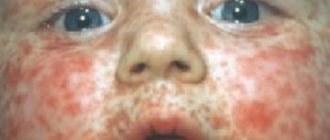Human papillomavirus is an infectious disease transmitted sexually and domestically. People become infected with a similar disease through direct bodily contact with an infected person. Virus particles penetrate microcracks that form on the skin or mucous membrane of the body and affect almost the entire body. More than a hundred types of infection are known. Some of them are particularly oncogenic. HPV type 52 in women is one of these, so this disease can cause not only complex pathologies of the genital organs, but also cancer itself. Therefore, a woman should not ignore scheduled visits to the gynecologist.
Peculiarities
This virus has infected a huge number of people around the world - at least 60% of the world's population have encountered HPV 52. The peculiarity of the DNA of the virus is that it changes the structure of the affected cells into which it penetrates when entering the body. As a result of this, their uncontrolled growth and malignant degeneration begin. An additional complication lies in the ease of transmission. There are many ways of infection:
- sexual intercourse during unprotected sexual contact, including anal contact;
- when interacting with secretions of a carrier of infection, especially when in contact with his mucous membranes;
- in a household way, especially with frequent visits to swimming pools, public restrooms and dubious hotels, as well as as a result of using someone else’s underwear, which in itself is unhygienic;
- by birth (transmission of the virus from a sick mother to an unborn child).
People who neglect basic hygiene rules are at particular risk. They have a high chance of “getting acquainted” with HPV 52 when touching their own genitals with dirty hands.
And now the news - this form of the virus is one of the few that can cause colorectal cancer. The remaining HPV strains mainly “specialize” in tumors of the cervix and other genital organs. Thus, lovers of anal sex, including men of non-traditional sexual orientation, fall into an additional risk group.
If one of the spouses “caught” this infection, then the second with almost one hundred percent probability became infected from him. This means that the course of treatment for HPV 52 must be completed together, and at the same time.
How to live a full life with the presence of a virus in the body
Type 52 papillomavirus belongs to strains of average cancer risk. This does not provide an absolute guarantee of the onset of the cancer process.
To continue living a full life, women diagnosed with HPV 52 need to follow the instructions of their doctor - undergo a course of treatment, take advantage of a healthy diet, give up bad habits, and avoid stress.
It is necessary to control sex life and ensure individual use of hygiene products.
Otherwise, a woman does not need to change her habits in order to live a full life.
HPV type 52 in women, with proper timely treatment, is easy to neutralize. There is no need to panic when making a diagnosis.
Compliance with medical recommendations and complete therapy will help get rid of the causative agent of a dangerous infection without further harm to health.
Symptoms
They occur so rarely that some doctors don't even consider them seriously. In addition, the signs of the papilloma virus often coincide with the symptoms of other sexually transmitted infections: chlamydia, gonorrhea (commonly known as gonorrhea). Nevertheless, in 10% of infected people, signs of HPV still appear, and in men and women they differ slightly due to the different structure of the genital organs.
The discovery of this disease during pregnancy frightens pregnant women, as the consequences can be quite serious. You can learn about the risks, causes of infection, and what treatment options are available.
Thus, representatives of the fairer sex encounter symptoms such as:
- smelly vaginal discharge, sometimes mixed with blood;
- pain when urinating;
- the formation of condylomas throughout the body, which cause great discomfort, especially if they occur in the area of the anus and vagina;
- severe discomfort during sex (pain, burning);
- inability to be sexually aroused;
- heaviness and pain in the lower abdomen and lower back.
A distinctive feature of women is that when these signs occur, they go to the hospital and undergo examination. But all their attempts to convince their spouse to do the same are unsuccessful, as a result the virus does not leave the family.
Representatives of the stronger sex are even less likely to experience the symptoms of HPV 52, but they also risk less - this disease is more dangerous for women. Signs of the virus in men:
- a large red “plaque” on the head of the penis;
- burning when urinating;
- numerous condylomas on the penis;
- discharge from the urethra (most often purulent);
- in rare cases, blood “streaks” are observed in the sperm.
At the same time, different sexes also have common signs of the papilloma virus caused by the inflammatory process: increased body temperature, nausea, upset stool, dizziness, weakness.
The absence of symptoms is dangerous not only because it delays treatment, but also because it constantly spreads the infection to other people. This is especially true for patients who are sexually promiscuous.
The importance of regular preventive examinations with a gynecologist
Every woman knows perfectly well how important it is to undergo regular gynecological examinations, but not all women come to them.
Such negligent attitude towards one’s own health often leads to the development of dangerous diseases, which in the initial stages of development could have been cured more easily and quickly.
The danger of papillomavirus 52 strain is as follows:
- The appearance of genital and anal warts, which can transform into malignant pathologies.
- Cervical dysplasia.
- Loss of reproductive function – infertility.
The greatest danger awaits a woman after the age of 40. This is the age when the activity of the virus increases, and benign papillomas can transform into malignant ones. Therefore, women at this age need to especially carefully monitor their health and be sure to undergo preventive examinations with a gynecologist every six months.
Diagnostics
Taking an anamnesis usually does not bring results - even if there are symptoms of HPV, they still will not directly indicate the desired virus. A general blood test has approximately the same diagnostic accuracy. Theoretically, with the help of this study it is possible to detect the causative agent of the disease, but it is simply impossible to establish its variety, much less sensitivity to antibacterial drugs. There are other diagnostic techniques for this:
- Bioseeding Biomaterial (scraping or smear) is taken from the patient, after which HPV is grown on its basis. As a result, the doctor receives an accurate diagnosis and immediately builds a treatment strategy - the type of DNA of the virus is determined.
- Daijin test. This is also a fairly accurate way to detect a virus.
- PCR.
As you can see, the most accurate result is obtained by bacteriological culture of HPV. But it’s not suitable for everyone - it’s expensive and time-consuming. Not all patients can afford such expenses, and there is no time to wait for the result, because the disease progresses continuously, the virus multiplies!
Pharmacy rapid tests for HPV provide a diagnostic accuracy of no more than 15%. It’s even a pity to spend money on this, even though they are inexpensive.
Treatment
HPV of any type cannot be completely cured. If a person encounters this infection, he will have to live with microorganisms in his cells all his life. But modern medicine has come up with ways to treat the virus, the essence of which is to suppress the activity of HPV, as well as strengthen the body’s own defenses - without good immunity, treatment will not be of much use. The treatment strategy depends entirely on which strain of HPV was detected during diagnosis. In any case, reducing the harmful effects of microorganisms is based on taking antibacterial drugs, which simultaneously have a beneficial effect on the immune system:
- Poludan;
- Cycloferon, from 195 to 828 rubles;
- Prodigiosan;
- Reaferon, from 588 to 1,158 rubles.
In addition to taking medications, it would not be superfluous to remove particularly overgrown papillomas and condylomas. If you reduce their number, the risk of cancer will decrease to almost zero. It is important that they are eliminated completely. For these purposes, simple surgical intervention can be used, but chemical exposure, cryodestruction (treatment with liquid nitrogen), and electrocoagulation are much more effective.
During the treatment of HPV 52, you should take vitamin complexes. They help strengthen the immune system, which means the fight against the disease will be more effective.
Factors provoking infection
By integrating into cells, the virus causes pathological changes in them. By introducing itself into DNA, it changes the functioning of the cell, resulting in its incorrect division. This provokes the appearance of condylomas and papillomas.
HPV promotes the degeneration of formations into cancerous tumors. Oncological changes in formations occur over a long period of time. Therefore, it is important to begin treatment under the supervision of a specialist when even small growths appear.
Also:
- You should avoid frequently changing sex partners;
- use protective equipment during sexual intercourse;
- have your own personal hygiene items.
Drug treatment
Treating a viral disease is quite difficult. Even after high-quality and comprehensive treatment, relapses are not excluded. Also, do not self-medicate. If HPV type 52 is detected, the patient should contact an oncologist. The doctor prescribes antiviral drugs. They will help reduce the negative impact of the virus on the body and destroy it.
Effective drugs in this group include:
- Viferon;
- Panavir;
- Alpizarn;
- Novirin.
Be sure to prescribe medications to strengthen the immune system:
- Aldara;
- Imicologist.
Attention! To eliminate the external manifestations of the disease, other treatment methods are used, but only in combination with medication.
Surgical method
This method is suitable if the formations have become cancerous.
In this case, removal of condylomas will prevent the development of oncology.
This method also . Removal of formations lasts no more than 20 minutes under local anesthesia.
The advantages of surgical intervention also include the absence of scars after surgery.
Physiotherapy
Physiotherapy will remove the formations, which will prevent the degeneration of condylomas into cancerous tumors.
There are several methods that are most effective:
Laser therapy removes any formations. After the intervention, no scars remain on the tissues, and there are no subsequent relapses.
- Cryotherapy is a method of removing condylomas using liquid nitrogen. Due to low temperatures, tumors dry out and fall off on their own.
- Electrocoagulation is a method for removing formations using electric current. After treating the growth, a small burn may remain on the tissue, which will go away on its own over time.
- Radio wave therapy is an excellent method for removing condylomas using a radio knife. The method is completely safe and does not cause pain.
Folk recipes
Quite often, traditional medicine recipes are used to remove formations.
The most popular are lotions made from salt, soda or vinegar.
The downside is the fact that these products cannot be used if formations appear on the mucous membranes .
This may cause burns.
Consequences and danger
Despite the fact that cancer due to HPV develops quite rarely even in the absence of treatment, the disease should not be left unattended - complications can occur at any time. If you are regularly examined, the occurrence of a cervical tumor will be clearly visible to a specialist; in such a situation, the disease can be defeated. But cancer is not the only complication of HPV 52. In addition, patients face:
- weakened vision and hearing;
- infertility;
- the development of other infectious diseases, including non-venereal ones;
- disappearance of sexual desire.
If the patient is a man, then one of the consequences for him will be impotence. Although she is undergoing treatment, she will have to spend quite a lot of time and effort on it. It is much easier to observe the rules of personal hygiene and avoid casual sex, especially without the use of basic contraception.
You can also learn about other types of HPV, as well as about the most dangerous consequence - cervical cancer, by watching this video.
How to identify the disease in women
Unfortunately, most often, papillomavirus 52 strain is diagnosed in women already at the stage of dysplasia and the tendency of healthy cells to become malignant. The virus can be diagnosed in a timely manner only if a woman goes to the gynecologist once a year for the purpose of prevention and undergoes all the necessary tests.
Diagnostic measures are as follows:
- a doctor examining a woman’s history, collecting complaints and examining her in a chair using mirrors;
- colposcopy, biopsy and histology to identify cancer cells in the cervix;
- Digen test, which allows you to evaluate the characteristics of the virus;
- PAP test.
Most often, these studies are enough to determine the presence of the virus, assess its oncogenicity and determine its activity. If necessary, the patient can be referred for consultation to a proctologist, dermatovenerologist, surgeon or oncologist.
Based on the examination results, the doctor can draw the following conclusions:
- Degeneration of the mucous epithelium. In this case, to exclude the development of oncology, the woman is prescribed intensive antiviral therapy.
- The presence of malignant cells – cervical oncology.










